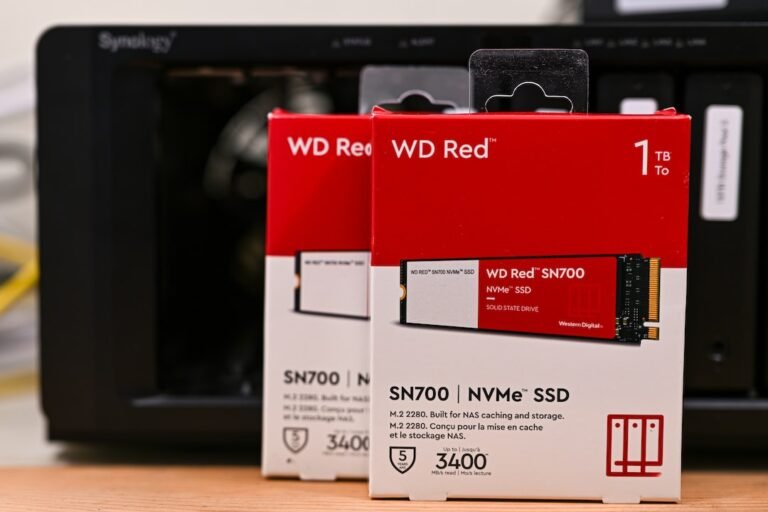Introduction
Is your Wi-Fi network secure? You may have password-protected it and think you’re safe, but did you know that there’s a type of cyber attack that can disrupt your Wi-Fi connection and render it useless? It’s called a jamming attack, and it can have serious implications for your online security and privacy.
In this article, we’ll delve into the world of jamming attacks and provide you with essential tips to protect your Wi-Fi network. We’ll explain what jamming attacks are, how they work, and what you can do to safeguard your network. So, let’s dive in and learn how to fortify your Wi-Fi against these threats.
What Are Jamming Attacks?
Imagine sitting down to stream your favorite TV show, waiting for the Wi-Fi connection to come to life, only to find that it’s inexplicably slow or not working at all. You check your devices, restart your router, but nothing seems to fix the problem. You may be experiencing the effects of a jamming attack.
A jamming attack, also known as a Wi-Fi jamming attack, is a cyber attack in which an unauthorized individual floods the airwaves of your Wi-Fi network with excessive radio frequency (RF) signals. These signals overload the network and disrupt the normal functioning of your Wi-Fi, making it difficult or even impossible for you to connect to the internet.
How Do Jamming Attacks Work?
Jamming attacks exploit the vulnerabilities of Wi-Fi networks, particularly those that use the 2.4 GHz or 5 GHz frequency bands. Typically, Wi-Fi operates on unlicensed frequencies, meaning that anyone with the right equipment can transmit signals on these bands.
To carry out a jamming attack, an attacker utilizes a device called a Wi-Fi jammer. This device emits high-power RF signals on the same frequencies used by your Wi-Fi network. As a result, the legitimate signals from your router and connected devices are drowned out and rendered ineffective.
Wi-Fi jammers come in various forms, from simple, handheld devices to more sophisticated ones capable of targeting multiple Wi-Fi networks simultaneously. These attackers may use jamming attacks for various reasons, including causing chaos and disruption, extracting sensitive information, or even creating a diversion for other malicious activities.
How to Protect Your Wi-Fi Network from Jamming Attacks
Now that you have a good understanding of jamming attacks, let’s explore some practical tips to fortify your Wi-Fi network and mitigate the risk of falling victim to such attacks.
1. Strengthen Your Wi-Fi Security
The first step in protecting your Wi-Fi network from any form of attack, including jamming attacks, is to ensure that your network is secured with a strong password. Set a unique and complex password for your Wi-Fi router that is difficult for others to guess. Avoid using common or easily guessable passwords such as “password” or “123456.”
Additionally, it’s crucial to enable WPA2 (Wi-Fi Protected Access 2) or WPA3 encryption on your Wi-Fi network. Encryption scrambles the data transmitted between your connected devices and the router, making it difficult for attackers to intercept and decipher.
2. Regularly Update Your Router Firmware
Router manufacturers regularly release firmware updates to address security vulnerabilities and improve the overall performance of their devices. It’s essential to keep your router’s firmware up to date by checking for updates on the manufacturer’s website or accessing the router’s admin panel.
By updating your router firmware, you ensure that any known vulnerabilities are patched, reducing the risk of attackers exploiting them to carry out jamming attacks or other forms of cyber attacks. Some routers even have an option to automatically check for and install firmware updates, making the process more convenient.
3. Employ Wireless Signal Range Limitation
One way to minimize the impact of jamming attacks is to reduce the signal range of your Wi-Fi network. By restricting the coverage area of your network to your home or office, you can limit the reach of potential attackers.
Modern routers come with adjustable transmission power settings, allowing you to control the range of your Wi-Fi network. Adjust the power level based on your needs, ensuring that the signal reaches the areas you frequent while minimizing its range beyond your premises.
4. Use 5 GHz Frequency Band
Another effective countermeasure against jamming attacks is to make use of the 5 GHz frequency band for your Wi-Fi network. The 5 GHz band offers more available channels compared to the overcrowded 2.4 GHz band, which makes it more difficult for attackers to disrupt your network.
Most dual-band routers support both the 2.4 GHz and 5 GHz bands. Take advantage of the 5 GHz band by connecting your devices to it whenever possible. This not only provides a more stable and reliable connection but also adds an extra layer of protection against jamming attacks.
5. Set Up a Guest Network
To further enhance your Wi-Fi security, consider setting up a guest network for your visitors and devices belonging to individuals you may not fully trust. A guest network isolates the devices connected to it from your primary network, reducing the risk of unauthorized access and potential jamming attacks compromising your main network.
Many modern routers have a built-in guest network feature that allows you to create a separate network with its own password. Enable this feature and share the guest network details with your visitors, ensuring that they can access the internet without compromising the security and performance of your primary network.
6. Invest in Quality Wi-Fi Equipment
The quality of your Wi-Fi equipment plays a significant role in protecting your network from jamming attacks and other security threats. Cheap and outdated routers may lack advanced security features or have weaker signal strength, making them more vulnerable to attacks.
Consider investing in a reputable wireless router with robust security features, such as firewall protection, intrusion detection, and prevention systems. High-quality routers generally have more extensive coverage and superior resistance to jamming attacks, providing you with peace of mind when it comes to your Wi-Fi security.
7. Enable MAC Address Filtering
MAC (Media Access Control) address filtering adds an additional layer of security to your Wi-Fi network by allowing only specific devices with known MAC addresses to connect. MAC addresses are unique identifiers assigned to each device with network capabilities.
By enabling MAC address filtering in your router’s settings, you can create a whitelist of approved devices that can connect to your network. Unauthorized devices attempting to connect will be denied access, making it difficult for attackers to infiltrate your network and carry out jamming attacks.
8. Use Wi-Fi Signal Monitoring Software
To detect and identify any irregularities in your Wi-Fi network, consider using Wi-Fi signal monitoring software. These tools allow you to monitor the strength and quality of your Wi-Fi signal and detect any unauthorized devices or jamming attempts.
Wi-Fi signal monitoring software provides real-time insight into the performance of your network, enabling you to take immediate action if you detect any suspicious activity. Some monitoring software even sends alerts or notifications when potential threats are detected, providing you with greater visibility and control over your Wi-Fi security.
Conclusion
Your Wi-Fi network is a gateway to the online world, but it can also be vulnerable to jamming attacks that disrupt your connection and compromise your security. By implementing the tips mentioned in this article and staying vigilant, you can significantly reduce the risk of falling victim to jamming attacks. Strengthen your Wi-Fi security, regularly update your router firmware, and utilize advanced features to enhance your network’s resilience.
Remember, protecting your Wi-Fi network goes beyond password security. Being proactive and implementing multiple layers of defense will go a long way in safeguarding your privacy and ensuring a reliable and secure internet connection for you and your devices.
FAQ
| Questions | Answers |
|---|---|
| How can I set up my home network to prevent jamming attacks? | To set up your home network securely, you can follow our detailed guide on /home-network-setup. |
| What are other common router issues, and how can I troubleshoot them? | For common router issues and troubleshooting tips, visit our guide on /router-troubleshooting. |
| Can using a mesh Wi-Fi system protect against jamming attacks? | Yes, using a mesh Wi-Fi system can help protect against jamming attacks. Learn more about mesh Wi-Fi systems in our guide on /mesh-wi-fi-systems. |
| Are there specific routers for gaming that offer enhanced security? | Absolutely! Gaming routers often come with advanced security features. Find out more in our gaming router buying guide on /gaming-router-buying-guide. |
| How can I integrate a VPN router to enhance my network security? | You can optimize your network security by integrating a VPN router. Discover more about VPN routers in our guide on /vpn-router-security. |
| Can I connect my smart home devices securely to my Wi-Fi network? | Yes, you can ensure secure integration of smart home devices. Check out our guide on /smart-home-integration for more information. |
| Are there routers suited for fiber internet connections? | Yes, there are routers specifically designed for optimal fiber internet performance. Learn about them in our guide on /fiber-internet-routers. |
| What is open-source router firmware, and how can it improve security? | Open-source router firmware offers enhanced security and customization options. Read our guide on /open-source-router-firmware to learn more. |
Further Reading
For more in-depth information on Wi-Fi security, jamming attacks, and protecting your network, check out the following resources:
- Seon.io – How to Detect and Protect Against Jamming Attacks
- America´s Cyber Defense Agency – Securing Wireless Networks
Remember to keep yourself informed and regularly update your knowledge as new threats emerge, and security practices evolve. Stay safe and enjoy a secure and uninterrupted Wi-Fi experience!




